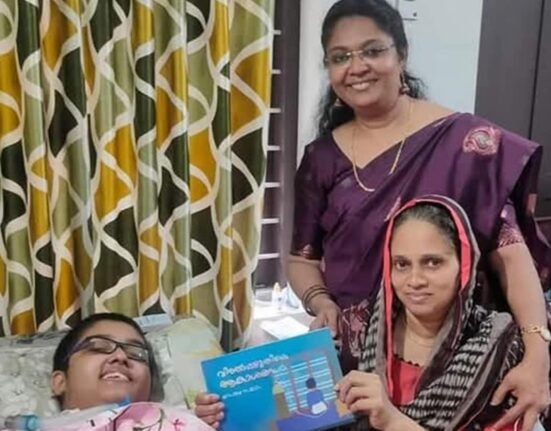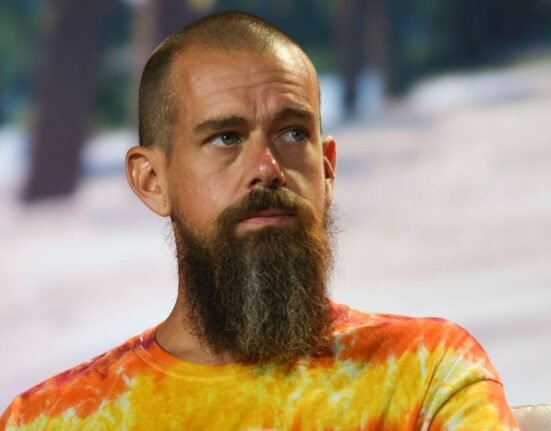
(Illustration by iStock/natrot)
What happens when a nonprofit program or an entire organization needs to shut down? The communities being served, and often society as a whole, are the losers. What if it were possible to mitigate some of that damage by sharing valuable intellectual property assets of the closing effort for longer term benefit? Organizations in these tough circumstances must give serious thought to a responsible exit for their intangible assets.
At the present moment of unparalleled disruption, the entire nonprofit sector is rethinking everything: language to describe their work, funding sources, partnerships, and even their continued existence. Nonprofit programs and entire charities will be closing, or being merged out of existence. Difficult choices are being made. Who will fill the role of witness and archivist to preserve the knowledge of these organizations, their writings, media, software, and data, for those who carry on, either now or in the future?
We believe leaders in these tough days should consider a model we’re calling Exit to Open (E2O) and related exit concepts to safeguard these assets going forward.
Enrich the Commons
How to avoid the tragedy of lost work? Society has institutions which act as stewards of our knowledge—universities, museums, libraries—but preserving the legacy of our social impact work is outside their scope. Furthermore, they often determine importance with the benefit of substantial hindsight, so little contemporaneous capture is done; it’s often a matter of archiving “what’s left” years or decades later. This long-standing model works less well in a digital era.
Are you enjoying this article? Read more like this, plus SSIR’s full archive of content, when you subscribe.
Exit to Open (E2O) exploits three elements:
- We are in an era where the cost of digital preservation is low; storing a few more bytes for a long time is cheap.
- It’s far more effective for an organization’s staff to isolate and archive critical content than an outsider with limited knowledge attempting to do so later.
- These resources are of greatest use if there is a human available to interpret them, and a deliberate archival process allows for the identification of these potential interpreters.
Luckily, we already have modern models to demonstrate the first of these three elements: the free online digital archive. The Internet Archive probably already has many copies of an organization’s website. For software assets, we have open source repositories like GitHub, which store software source code for free. Unfortunately, the most important and valuable program content is not typically available on an organization’s website, and the great majority of software being used in the social sector is not open source and isn’t available from an open source repository. In the case of data, we don’t currently have a model for stewarding social good datasets, either open datasets or sensitive data which need to remain private. The university community has an impressive track record of long-term data hosting for science, but there is currently no comparable infrastructure for nonprofit organizations. Using a responsible data governance framework, such as the Better Deal for Data, would be well advised. It would also be good practice to allow stakeholders a period of time to download their data before it is deleted or transferred, as the bankrupt genetics startup 23andme is doing at the time of this writing.
The second element requires a modest investment of time from organization staff. Sometimes this will be available as part of the existing funding as the program or organization is being wound down. In other circumstances, donor support will likely be needed. The good news is we have seen multiple donors willing to step up to ease these organizational transitions. Donors, especially foundations, have invested major resources in creating nonprofit assets, and they may be willing to make a small investment to ensure those assets continue to be available to serve the larger interests of an entire field and society.
The human element is the most difficult to plan for. However, our experience is that nonprofit team members generally take great pride in their accomplishments, and are deeply disappointed when their programs end, especially unexpectedly. Acknowledging their creativity through attribution seems like a small gesture of appreciation, while also preserving a trail to their expertise in case it is needed in the future. We believe that a majority of them would be willing to support the reuse of nonprofit assets they helped create.
Call to Action
We want to encourage two groups to take Exit to Open actions: nonprofit leaders and funders.
Nonprofit leaders engaged with the closure of programs and organizations can act now. In the difficult days and weeks while shutting down, think about how to open up as much of the knowledge embedded in your organization as possible, following the ideas in this paper. This could be as easy as posting as much of your content as possible to your website and changing the copyright notice on the footer of your web pages to a Creative Commons license that allows others to freely reuse and adapt your material. Make a prepayment to keep your website up for as long as is affordable, hopefully at least a year. If you have software source code, put it on an open repository like GitHub and attach an open source license.
Funders should consider advocating for the transition of these assets to benefit the public. This includes:
- Actively encouraging organizations in crisis to consider this as part of their exit planning
- Funding closing nonprofits for some extra time to pursue the E2O strategy
- Funding digital archivists to create an actual E2O playbook of best practices informed by their expertise
- Supporting digital archives like the Internet Archive, and others, who are likely to accept this content and keep it available to the public.
The Playbook
To make the process of responsible exiting as straightforward as possible, a “playbook” should be created, ideally with the help of actual digital archivists (which the authors are not). These archives need to be as easy and cheap to create as possible!
The playbook should contain step-by-step instructions for execution, including:
- Educational materials targeted at decision makers (board members and organization management)
- Standard board resolutions and assignment agreements (if needed) for intellectual property rights
- Board members need to be assured that no additional liabilities are being created for the ongoing organization (where applicable) and the people associated with it. Gifting to society should not come with potential sanctions.
- Simply applying a Creative Commons or open source license is a well-understood action of many nonprofits, not an unusual step
- Guides for archiving or transitioning different kinds of information from closed to open
- documents
- media (videos, audio, etc.)
- software repositories
- databases
- trademarks and patents
It is important to note that the Internet Archive sees the preservation of digital content as central to their mission. The Archive has already offered to support the Exit to Open concept by accepting all relevant content (as a matter of fact, anyone can upload content to the Archive with a free account). In addition, if enough nonprofits take advantage of their offer, they may consider creating a special collection of such material on their platform.
The playbook needs to be as straightforward as possible, because the work will be conducted under considerable time and resource pressure by people who are probably losing their jobs.
Exit to Open Means Open
We are advocating for releasing the intellectual property assets of closing nonprofit programs under the most generous and open licenses available. When a project is shutting down, the reasons for keeping things proprietary evaporate. It’s no longer a competitive advantage to keep something under control when you won’t be competing for funding or reputation any longer!
For copyrighted materials like documents, pictures, videos, and presentations, or for databases which can be responsibly made open (such as scientific data), that might mean choosing a Creative Commons license such as CC-BY 4.0, which only requires attribution to the original creator. It’s even possible to use CC0, which is the public domain declaration that offers maximum openness. Software has its own range of open source licenses, such as the GPL or Apache licenses, which can provide others the freedom to use and improve the software.
One thing to keep in mind is that choosing to release something under an open license means making it available to everybody on the planet. Open really means open, and that means that the released materials are available for other nonprofits, governments, and even businesses. Exit to Open has particular value when an organization and its work is being suppressed (as is happening in an increasing number of countries). Open availability makes it possible to continue the work in exile, or in multiple countries.
Maximum sharing increases the likelihood that these assets will benefit others.
What If Open Is Not a Good Option?
Not all intellectual property assets make sense for making open. Confidential data about clients should probably be carefully deleted when closing a program to protect the data from falling into the wrong hands. In some rare cases, it might make sense to exit to a trusted steward, by transferring the database to another trusted nonprofit with a similar mission. We have seen this done in the human rights field with records of human rights abuses.
Another example is a trademark that doesn’t really make sense as an open asset, since the purpose of a trademark is to indicate who the maker of a product (or service) is. It may make more sense to abandon a trademark, unless there is another trusted organization which can put the trademark to good use for the benefit of society.
Appreciation
We want to express our appreciation for those who inspired us, especially from the for-profit startup world. The concept of “Exit to Community” was first popularized by Nathan Schneider in 2019. In addition, we initially floated the idea of Exit to Open with colleagues in the agriculture sector with active support from the 11th Hour Project. However, it was during discussions with the Skoll Foundation grantee community leading up to the 2025 Skoll World Forum that crystallized the interest in the context of the nonprofit sector.
Conclusion
These are challenging times. A huge amount of knowledge is going to be lost, and much of it will be costly to reproduce. With today’s digital capacity, it is possible to save much of this knowledge, index it, and use it to inform future programs. The approaches we’re outlining here can support the transition of nonprofit activities to other nonprofits, for-profits, or even individual consultancies seeking to continue elements of the discontinued programs. We can already imagine Exit to Open resulting in “Exit to AI,” where the information from the closed program can be added to training sets for future AI tools to make the knowledge more usable and accessible.
Opening the knowledge of closed nonprofits and their programs is in the best tradition of the nonprofit sector, which is to benefit all of society.
Copyright 2025 Jim Fruchterman and Steve Francis. Stanford Social Innovation Review is publishing this article licensed under CC BY 4.0.
Support SSIR’s coverage of cross-sector solutions to global challenges.
Help us further the reach of innovative ideas. Donate today.
Read more stories by Jim Fruchterman & Steve Francis.







